
| YOU ARE HERE: H. P. OLIVER HOME > BOOKS > GOOD DAY, AMERICA VISUALIZATIONS |

|
VISUALIZATIONS |
|
(Chapter 1) Charline loved the carnival atmosphere of the Gayway, the rainbows of flowers blooming all over the island, the fabulous industrial and technology exhibits, and even the gigantic cash register-shaped building displaying in large numbers the running attendance totals for the Exposition courtesy of the National Cash Register Company. It was a magical place for Charline. |
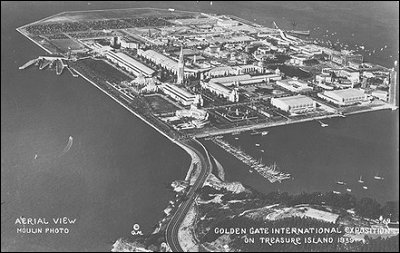 |
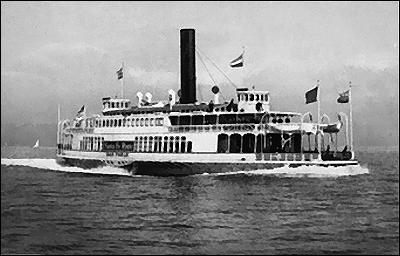 |
(Chapter 1) Our ride home was aboard the Key System ferry, SAN PABLO, a sidewheeler that carries fair goers from Treasure Island to San Francisco's Ferry Building in less than 30 minutes. Since the fare is only a dime, the SAN PABLO might be the best bargain in town. |
|
(Chapter 1) Charline cuddled close while enthusiastically reminding her unenthusiastic boss of the amazing things we saw at the fair when the entire world exploded. Well, maybe not the entire world, but that's sure what it sounded like. |
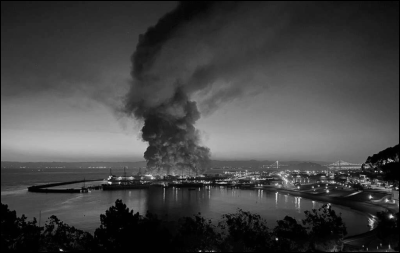 |
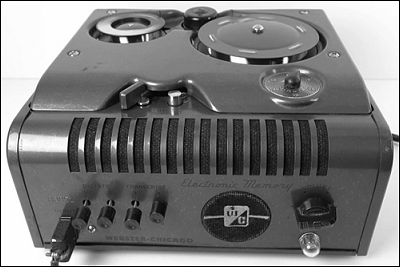 |
(Chapter 2) I identified myself and said, "engineering," the woman who answered phones at Mutual's network headquarters transferred my call to one of the network's audio studios, where an engineer plugged the telephone line into the input jack of a wire recorder and said, "Rolling." |
|
(Chapter 2) After kissing Charline goodnight at the door to her rooms in the Warrington Apartments at Post and Leavenworth, I drove south to the Alta Apartments in the heart of San Francisco's decidedly blue-collar Filmore District. |
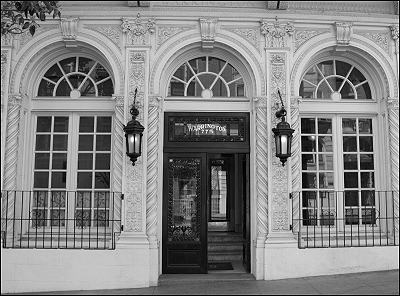 |
|
(Chapter 3) 8:15 A.M. – Monday, March 6, 1939 KFRC Radio Studios Fourth floor, 1000 Van Ness Avenue, San Francisco |
|
(Chapter 3) Tasking another swallow of coffee, I mumbled, "Smart Aleck." Still grinning and in a lower voice so she wouldn't be heard through the still open office door, she said, "That may be, but I'm your Smart Aleck." Picking up the telephone handset, I said, "A godsend for which I count my blessings daily." |
 |
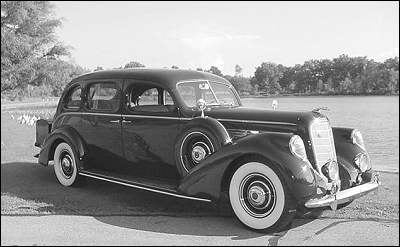 |
(Chapter 4) A large dark blue Lincoln limo was closing on my rear bumper at a high rate of speed. The driver leaned on his horn and I moved to the shoulder of the road just in time to avoid losing some Cadillac parts to the Lincoln. I stayed where I was to watch how the limo driver dealt with the roadblock ahead. It turned out he didn't have to deal with the roadblock. |
|
(Chapter 5) One reaches the expansive entrance to the Contra Costa County Hall of Records by climbing a bunch of red tile steps leading to a portico supported by six Roman Doric columns. Beyond the portico are six double brass and glass doors. |
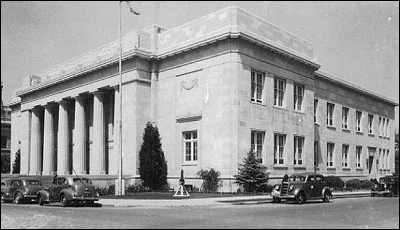 |
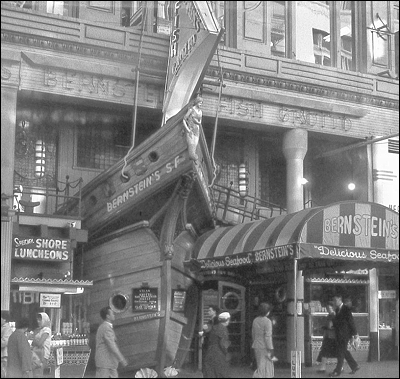 |
(Chapter 5) Bernstein's is located at 123 Powell Street, but it would be hard to miss even if you don't know the actual address. The sidewalk entrance is through an authentic and nearly full-sized representation of an old fashioned sailing ship's prow.
|
|
(Chapter 7) The main road into the operations areas of Mills Field is reached by an extension of San Bruno Avenue. The extension was necessary because before Mills Field became San Francisco's Municipal Airport, the area was just marshes on the edge of San Francisco Bay and nobody had any reason to go there. |
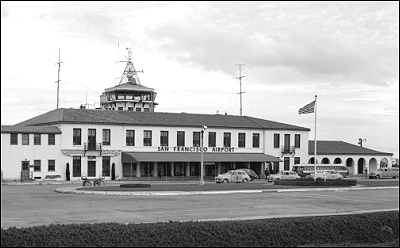 |
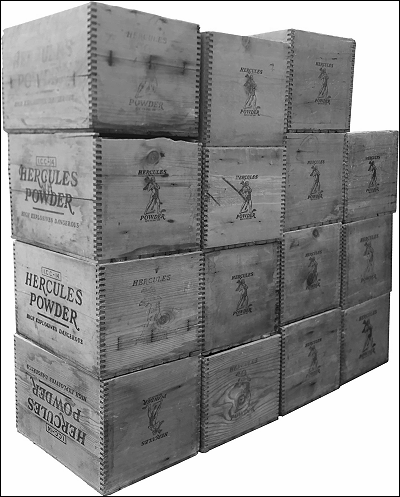 |
(Chapter 7) Wilkins made a beeline for the dynamite—four stacks three and four wooden crates high. First, he examined the marking on the wooden boxes. He said, "They're using the good stuff. If you have to mess with dynamite, Hercules is one of the most stable and reliable." |
|
(Chapter 8) At nine a.m. sharp, San Francisco Fireboat Number Two cast off her lines and pointed her bow in the general direction of Richmond. We skirted the northwest corner of Treasure Island close enough to see employees and early fairgoers arriving in the parking lot. |
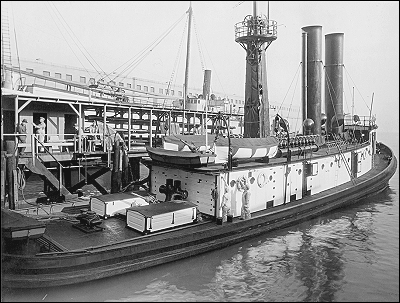 |
 |
(Chapter 9) The new and very classy Ocean Park Motel on 46th Avenue is just two blocks east of the beach and their orange neon VACANCY sign out front that was lit, so I pulled into their drive and stopped in front of the office.
|
(Chapter 10) I had no idea how to find Pinole Creek, but providence provided. San Pablo Road crosses Pinole Creek. From there, I found a barely paved access road and followed it north along the creek bank to the bay shore. |
 |
 |
(Chapter 11) From Pinole Creek, I hopped into Mutual's Caddy and followed a railroad track up the coastline half a mile to the town of Hercules. Actually, I followed the railroad track all the way to the Hercules Powder Company's plant, where I parked next to a building marked "Office" and went in.
|
(Chapter 12) Point Lobos made a southerly turn and deposited us directly in front of the Cliff House. Well, almost directly in front of the Cliff House. I had to hunt down a parking spot, which was about a hundred feet from directly in front of the Cliff House. |
 |
 |
(Chapter 12) She gently removed the ring and held it up to the light. "This is beautiful! I love the shape of the mounting it's unique, but not outlandish. Will you please put in on for me. That's your job, you know."
|
(Chapter 13) Charlie said, "I suppose you want the gun out of here, too." That surprised me, but I tried not to make a big deal about it. "Yeah, as long as you've got it right there." She pulled my Colt Detective Special out if its chamois bag. I said, "Handle that carefully, it's loaded. |
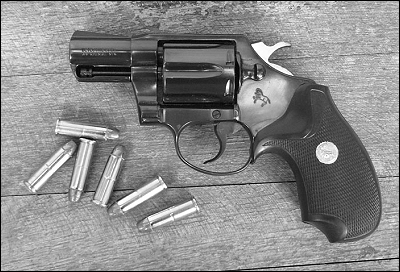 |
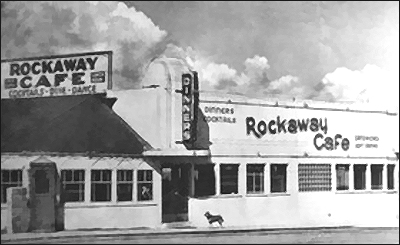 |
(Chapter 14) There's a cozy lounge attached to Nick's restaurant that also serves as the Sea Breeze Motel office after five. A fellow I know as Alex from our all night poker parties was behind the bar and recognized me immediately. |
(Chapter 15) I gave him a cup of coffee and handed one to Charlie after she climbed onto the passenger side of Will's unmarked Pontiac sedan. |
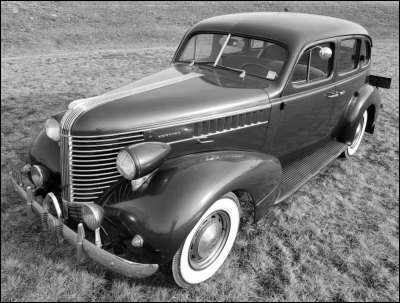 |
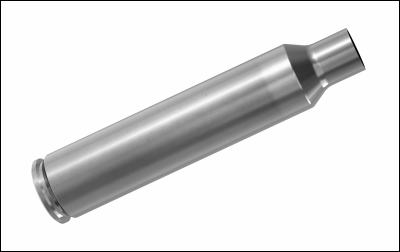 |
(Chapter 15) "It's a likely spot. I'm hoping he didn't take time to pick up his brass." The deputy knelt a few feet to my right. "He didn't. Look here." |
(Chapter 16) I included a description of black Buick sedan and its Nevada license plate. After concluding the update with an optimistic assessment of law enforcement's chances of bringing the espionage terrorists to justice, I added my signature signoff. "This is Parker Atkins reporting. Good day, America." |
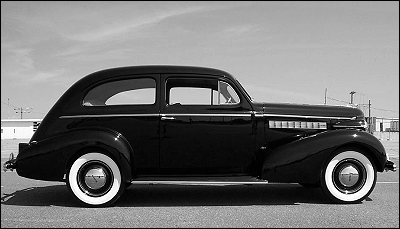 |
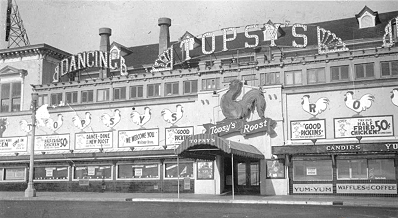 |
(Chapter 16) Charlie shook her head vigorously. "There is no such thing as too cautious. Besides, we can include a lunch stop in our travels. I know just the place to pick up something we can bring back here." Grinning, I said, "Let me guess. Topsy's Roost at Playland." "No fair! You know fried chicken is my downfall." |
(Chapter 16) Topsy's Roost is part of Playland-at-the-Beach, San Francisco's most spectacular amusement park since the 1915 Panama–Pacific International Exposition. As the name suggests, Playland-at-the-Beach is located across The Great Highway from the beach just south of the Cliff House. |
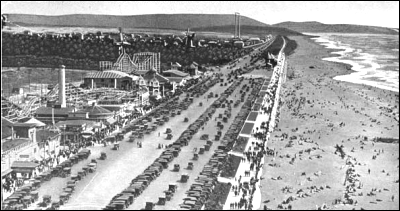 |
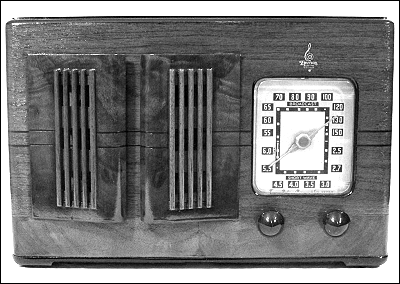 |
(Chapter 16) Charlie turned on the Emerson table radio on top of the room's chest of drawers. Tuning it to KFRC, she said, "I think they're playing swing music this time of the day."
|
|
(Chapter 17) Will greeted Charlie warmly, "There she is, our very own Nora Charles. I grumbled, "And who am I supposed to be, Asta?" Will grinned at me. "Naw. Asta is housebroken." |
 |
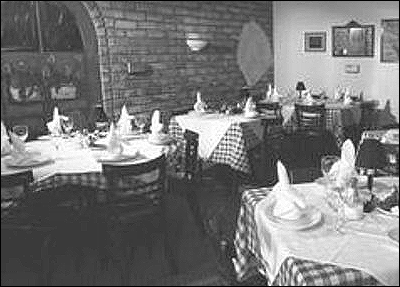 |
(Chapter 17) Will's description of Mama's Kitchen was accurate right down to the checkered tablecloths. There were also candles poked in wine bottles with wax running down the glass and baskets of breadsticks on the tables. He was right about the food being great, too.
|
(Chapter 18) Charlie got us up Saturday morning, made sure we had coffee, and we got to Will Framm's office at the County Courthouse in Redwood City by ten. |
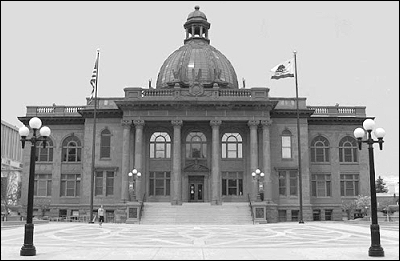 |
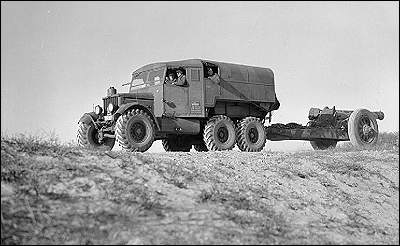 |
(Chapter 19) My thoughts were interrupted by a dark green Army four-ton six-by-six truck roaring by toward the drydocks. It literally shook Canal Street and left swirling clouds of dust in it's wake from the loose dirt on the shoulders of the road.
|
(Chapter 20) My rearview mirror told me our tail was closing steadily on our rear bumper. When it was close enough to see the individual grille grill bars below the Ford V-8 emblem on the hood, I put my foot down harder on the Caddy's gas pedal and felt the peppy little coupe jump ahead. The Ford quickly closed the gap. |
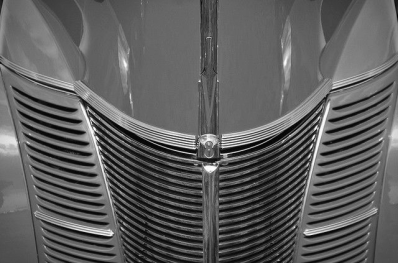 |
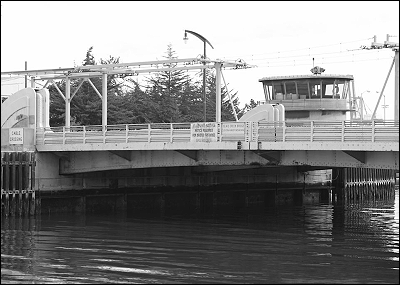 |
(Chapter 20) Up ahead I saw the drawbridge over Islias Creek.
|
(Chapter 20) "At that point we heard the wail of a siren and a moment later we saw the siren's source—a two-tone green LaSalle ambulance. |
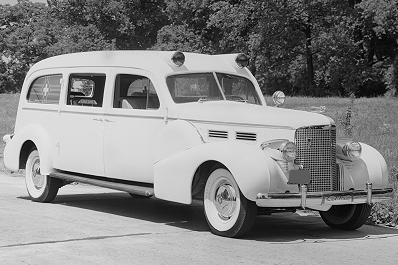 |
 |
(Chapter 20) "Just out of curiosity, what happened to the thugs." "They are . . . ah . . . deceased."
|
(Chapter 21) Ten minutes or so later a spanking new black and gray Cadillac Series 61 two-door coupe pulled up to the curb. "Here you go, Mister Atkins. This one has the 135 horse L-head V-8 under the hood with a three-speed transmission. Be careful. It will run away with you if you let it." |
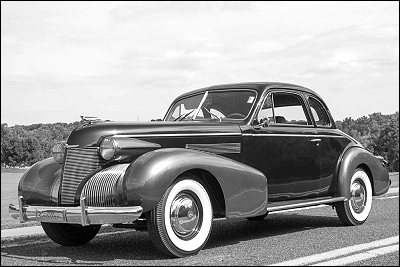 |
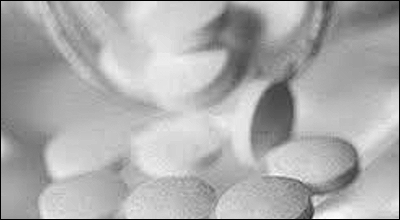 |
(Chapter 21) I looked at the little bottle of pills on the nightstand. Whatever they were, the sure did the job.
|
(Chapter 22) "In less than five minutes, we were back in our room with steaming cardboard cups of coffee. |
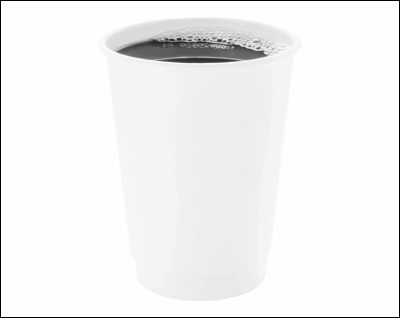 |
 |
(Chapter 22) "This bright red upholstery! From the outside this car looks so plain, but in the daylight, this . . . this is overpowering."
|
(Chapter 22) As I pulled away from the curb, she said, "Well, that was embarrassing." "What?" "I saw him in there holding up my . . . unmentionables with a big grin on his face." |
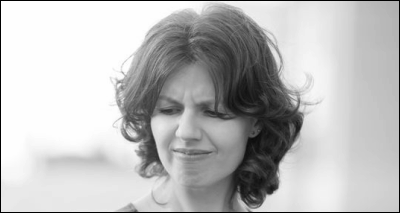 |
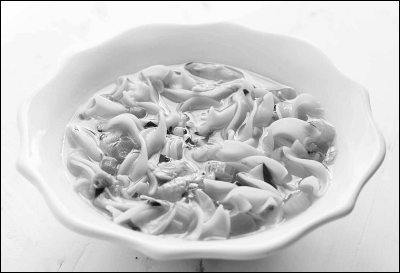 |
(Chapter 22) "I bet Mama Schindler makes a terrific chicken noodle soup that heals anything and everything."
|
(Chapter 22) "From the color of those clouds, I would say we're going to get a lot of rain. You sure you want to go to Nick's? These storms that come in from the southwest hit the coast pretty hard." |
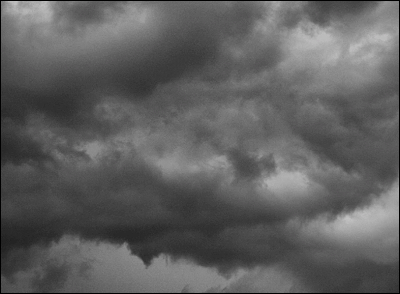 |
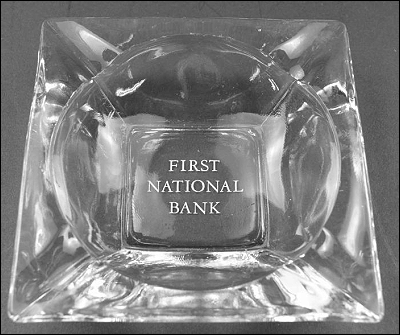 |
(Chapter 23) "It's a sturdy chunk of glass that also serves as a paperweight and gives my desk a lot more class than I do."
|
(Chapter 23) Just so you know, I'm driving that black '37 Plymouth sedan over there." I looked where he gestured and saw the Plymouth. It was pretty beat up. |
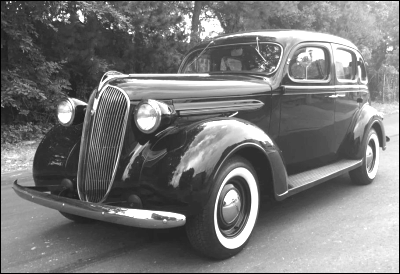 |
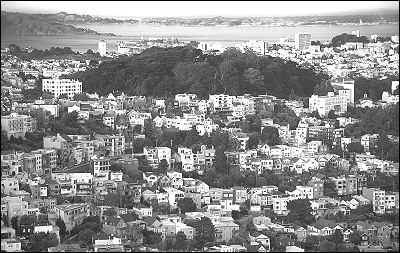 |
(Chapter 24) When we got there, I could see why Will picked the place. Buena Vista Park consists of a small densely wooded hill surrounded by a sea of Victorian homes dating back to the 1900s.
|
(Chapter 24) We followed a curving roadway to the top of the hill where we came out of the trees on a bluff with a view to the east across San Francisco and the bay all the way to Oakland. |
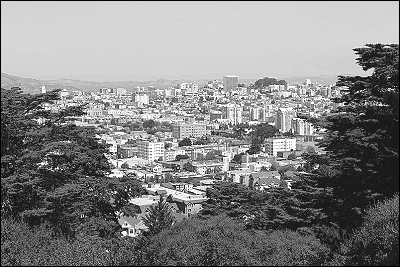 |
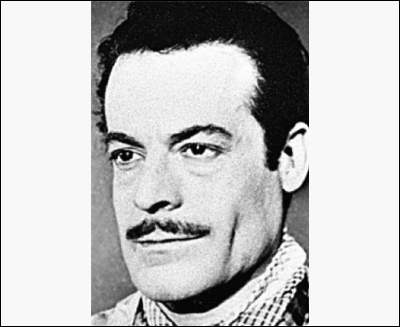 |
(Chapter 24) I looked closely at the photograph Will held up. It was a little grainy, but the face was clear enough to remember and recognize if I saw it again.
|
(Chapter 24) In Milbrae, she pointed out the El Rancho Motel, a sprawling hacienda-style motel at 1100 El Camino Real, on the east side of the highway. |
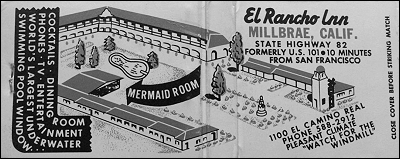 |
 |
(Chapter 25) The El Rancho's lounge and restaurant are on a lower level of the motel's central building and share a common wall with the swimming pool. Large sections of the wall between the two are glass so customers can watch shapely young women cavorting in the pool on the other side of the glass.
|
(Chapter 25) Like most modern motels, the El Rancho is U-shaped. The open end of the U faces El Camino Real. We were given room 112 on the north side of the U fairly close to the highway. |
 |
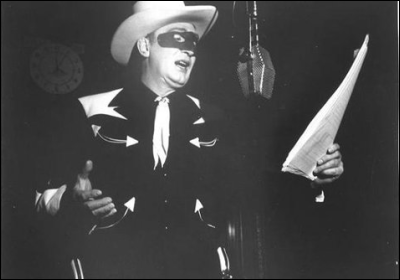 |
(Chapter 25) "The Lone Ranger and Tonto. They're on KFRC." "Then by all means we must tune in and see what Fran Striker has in store for the brave masked man and his faithful Indian companion this week."
|
(Chapter 25) Meanwhile, Charlie and I packed our bags, loaded them into the Caddy, and sat in a couple of metal lawn chairs—one blue and one green—in front of our former room to watch the proceedings while we waited for Will finish his deputorial duties. |
 |
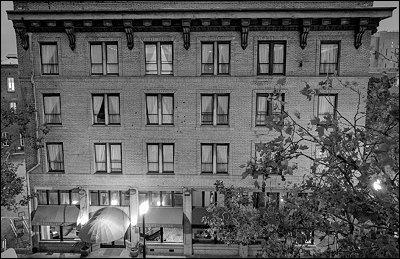 |
(Chapter 27) Generally, I prefer motels to hotels simply because there is less fooling around involved in coming and going; however, one advantage of the Washington Inn was its coffee shop. We were packed and ready for breakfast by seven and all we had to do was walk next door to their restaurant. |
(Chapter 27) We found the place a block west of the swampy bog Oaklanders refer to with great civic pride as Lake Merritt. |
 |
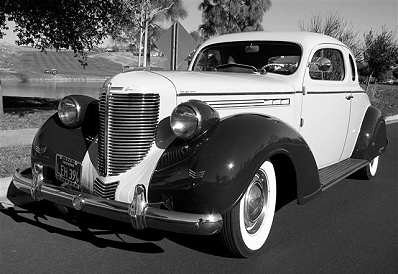 |
(Chapter 27) I watched our rearview mirror until Fuchs' two-tone Chrysler coupé passed in the westbound direction on 23rd Street. |
(Chapter 27) Charlie pulled into a place called the Hi-Way Motel. Its sign advertises 50 cottages and apartments, a heated swimming pool, and a coffee shop. |
 |
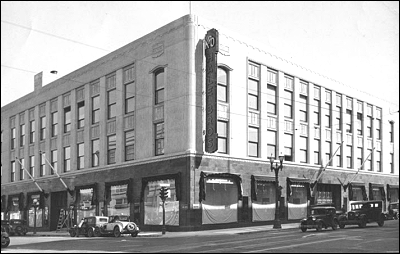 |
(Chapter 28) We were on First Street in San Jose's downtown shopping area, and I pulled into the parking lot behind the Hale Brothers department store at First and San Carlos. |
(Chapter 29) Skyline is an aptly named north/south road riding the crest of the hills that make up the backbone of the San Francisco Peninsula, dividing the Pacific Ocean on the west and San Francisco Bay to the east. |
 |
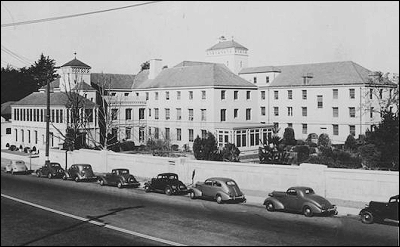 |
(Chapter 29) Mills Memorial Hospital sits on the bay side of the Peninsula at the intersection of the El Camino Real and Truesdale Drive in Burlingame. |
(Chapter 29) An apple green Chevrolet cabriolet was pulling into our turnout. |
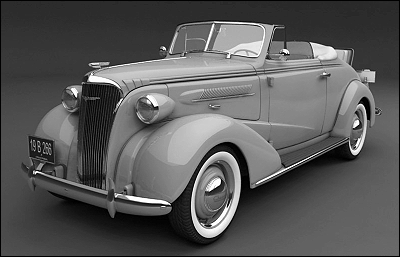 |
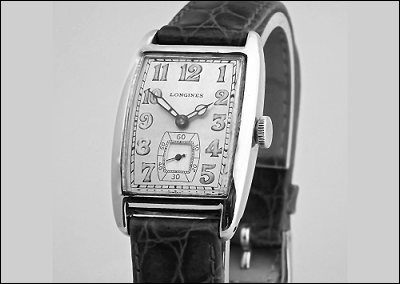 |
(Chapter 29) I looked at the glowing hands on my Longines. |
(Chapter 29) Our room was the third on the left just beyond our carport. We were nearly there, when a car turned into the narrow driveway, trapping us in its headlights. |
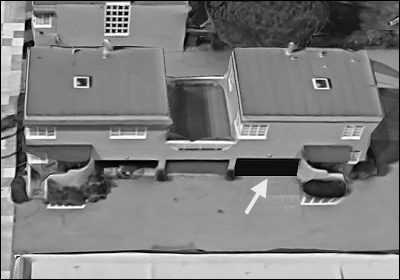 |
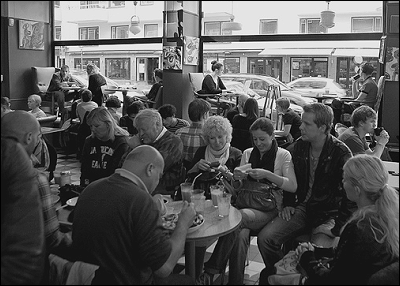 |
(Chapter 31) We arrived at Sandy's Coffee Shop on El Camino Real at Euclid in San Bruno about five minutes early, but Will's unmarked Sheriff's Department Pontiac Coupé was already in the parking lot. |
(Chapter 31) "And then there's Walter Winchell and his 'Good evening Mister and Missus America and all the ships at sea' gag. He's Mutual's mainstay . . . ." |
 |
 |
(Chapter 32) The depot is built of stone and apparently dates back to 1888. The two buildings—a baggage room and a waiting room—are connected by a breezeway. The waiting room part even has a round turret from which SP sells tickets and distributes timetables. |
(Chapter 32) It was dark inside the Carlos Club, which suited my mood perfectly. |
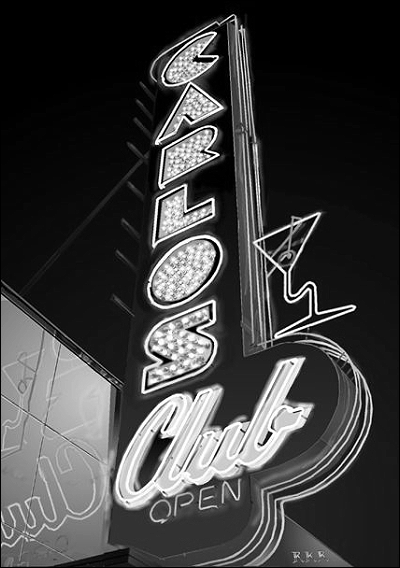 |
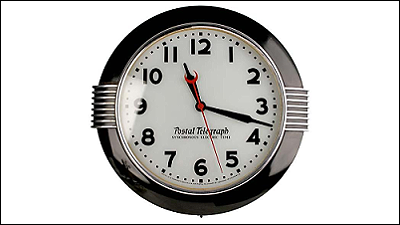 |
(Chapter 32) She looked up at our snazzy Postal Telegraph clock. "Look, it's almost six. No wonder I'm hungry." |
(Chapter 33) Golden Gate Park is a thousand acre maze of random roads and trails. |
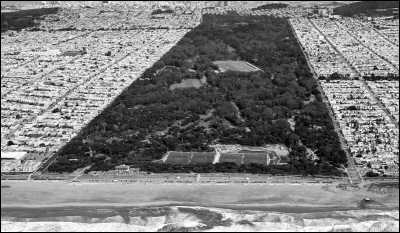 |
 |
(Chapter 33) Stow Lake Road eventually enters a clearing where the road widens to provide parking for a boathouse on my left and a restroom building on my right. The boathouse is a long narrow rustic building on the lake shore where folks rent boats to go rowing and buy snacks. |
(Chapter 33) The Lugar model he carried was a "Parabellum," and that is the second half of a Latin phrase I remember as, "If you want peace, prepare for war." |
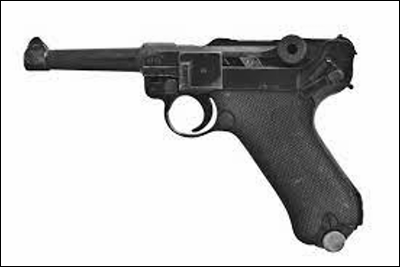 |
 |
(Chapter 34) As he slid the Mauser's oiled walnut stock part way out of the case to look it over, Charlie was also looking at it. Her expression said she saw the rifle as something evil that might even have a life of its own. |
(Chapter 35) Charlie and I were led down stairs to a black Ford sedan in the garage parking area. |
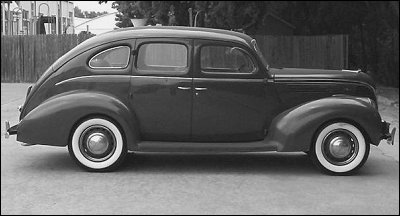 |
 |
(Chapter 35) We were at one end of a long dark green passenger car with the word "PULLMAN" lettered in gold above the windows. Below the car's windows, the gold letters spelled out "FERDINAND MAGELLAN." |
(Chapter 36) One of the first things that caught my eye in the parlor was a copy of a painting I'm pretty sure hangs in the White House presidential portrait gallery. |
 |
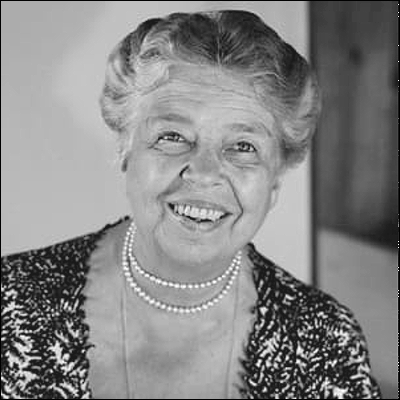 |
(Chapter 36) The person entering the parlor was a lady. I know she is a "lady" because her title says so. She is Eleanor Roosevelt, the First Lady. |
(Chapter 37) I don't think the parking lot Will picked is really intended to be a parking lot, but the Land's End area—including the Cliff House, Sutro's Baths, and the gardens of the old Sutro mansion—attracts a lot visitors, so places that may not have been intended as parking lots get drafted into service. |
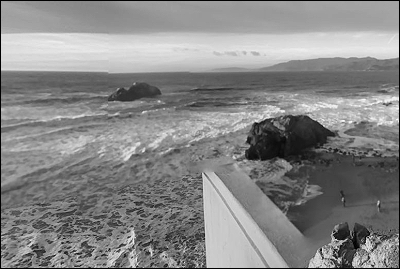 |
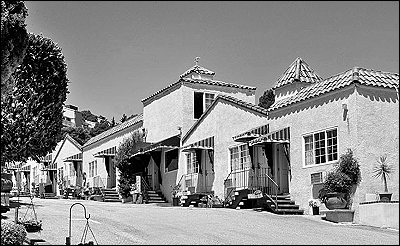 |
(Chapter 38) The Casa La Bahia Motor inn's 30-some rooms are distributed equally along both sides of a sloping 500-foot drive with a planting area down the middle. Though all the rooms on each side of the drive are part of the same structure, they are designed to look like individual haciendas with Spanish tile roofs topping adobe facades with bright blue and yellow canvas awnings over raised porches. |
(Chapter 38) Grabbing my hand, she led me to the door of the La Pequeña Tienda de Tamales. Inside we had a choice of beef, pork, or chicken. Charlie went for chicken and I picked pork. |
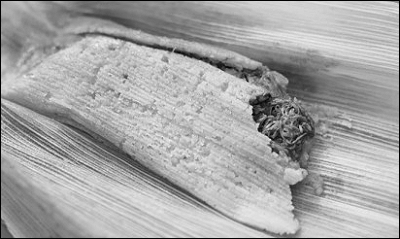 |
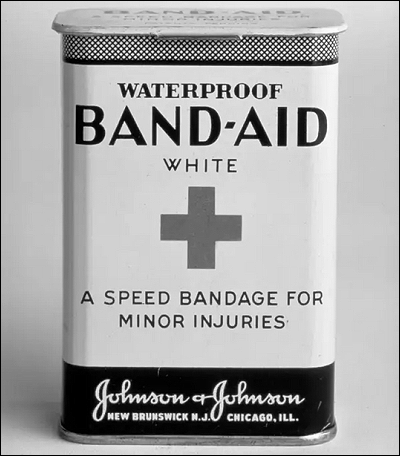 |
(Chapter 38) "I thought I'd try to cover it with a couple of these self-adhesive Band-Aid things." |
(Chapter 40) Karl Fuchs was standing behind Dillon with his left hand on the agent's left shoulder and his right hand pressing the barrel of an MP-40 machine pistol against the agent's right temple. |
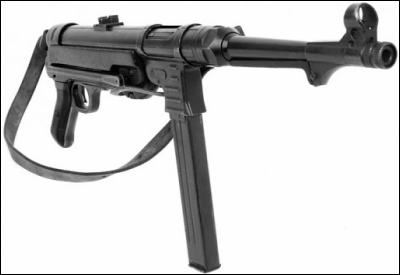 |
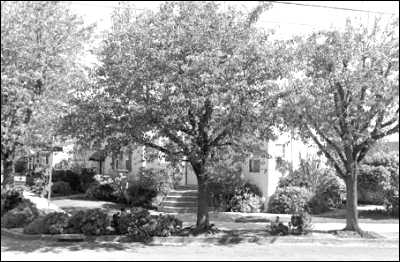 |
(Chapter 40) The Framm's home is a modest three bedroom, two bath house in an older, well established Milbrae residential area a little east of the El Camino Real. It wasn't fancy by any means, but it was obviously well cared for and clean as a whistle. |
(Chapter 41) We climbed into a Yellow taxicab while the driver loaded our bags into the trunk. |
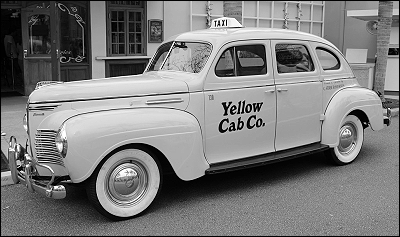 |
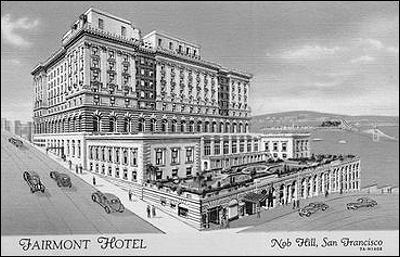 |
(Chapter 41) . . . which meant we were already a few minutes into Saturday when we rolled up to the Fairmont's imposing entrance. |
(Chapter 42) Crossing the bridge is an adventure because you are driving your car along a roadway dangling 260 feet above the water. I walked across the thing once—the bridge is about a mile and three-quarters long—and I recommend that experience to everyone . . . who isn't afraid of heights. |
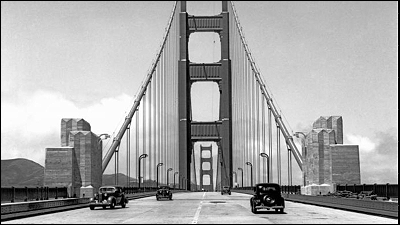 |
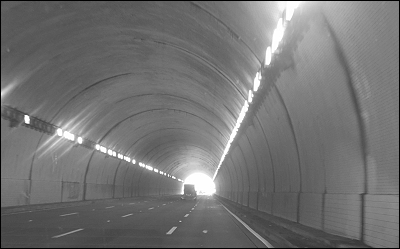 |
(Chapter 42) The tunnel is called "Waldo." If you require your roadworks to have names, Waldo always seemed a rather friendly name for a tunnel. |
(Chapter 42) Our destination was the Hotel Sausalito, an occupant of a large two story building at the corner of El Portal and Bridgeway. Charlie said the hotel has been there forever. Judging by the architecture, I judged "forever" to be in the mid-teens. |
 |
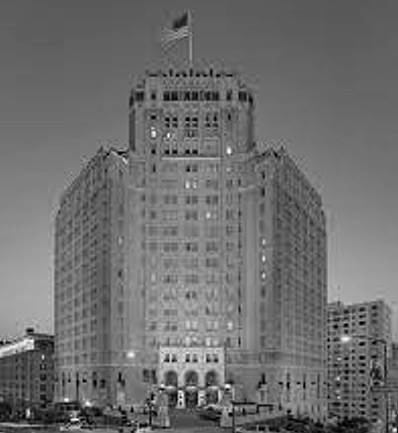 |
(Chapter 43) "I don't trust Frazer any farther than I can throw him, and I have very bad feelings about just walking into the Mark Hopkins' lobby and asking for him." |
(Chapter 43) Charlie pulled our trusty Flying A map out of the glove compartment. |
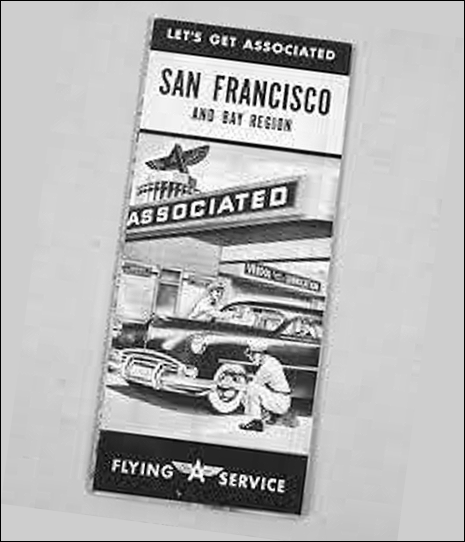 |
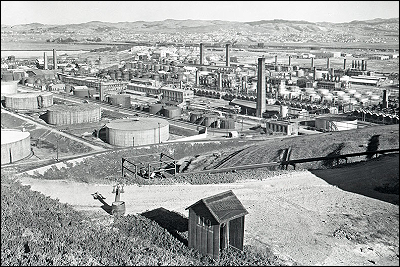 |
(Chapter 44) Mostly, what they've got there is an oil refinery consisting of huge round storage tanks and a long tanker ship wharf, all emblazoned with the Chevron insignia. Along with the refinery, what they also have at Point Richmond are huge puddles of black muck . . . lots and lots of stinking black muck. |
(Chapter 44) You could smell the muck, but at least you couldn't see it. A classy sign atop the building said, "HOTEL MAC. |
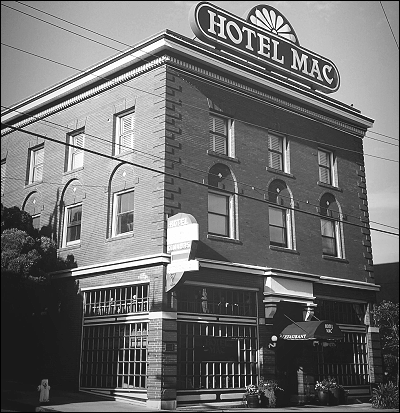 |
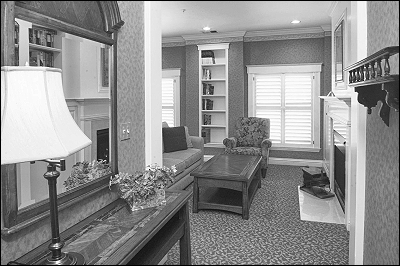 |
(Chapter 44) The place was immaculate and the rooms were homey and comfortable. The one we rented on the second floor even had a fireplace. |
(Chapter 45) Highway 40 took us to the Carquinez Bridge where we were charged 55-cents (45 for the Caddy plus a nickel each for Charlie and me) to cross the Carquinez Strait. |
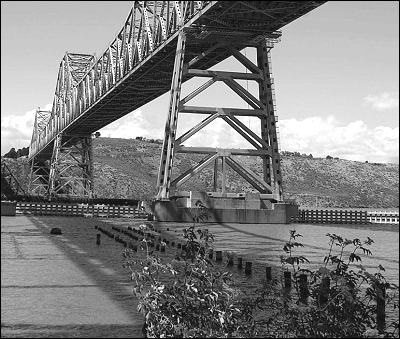 |
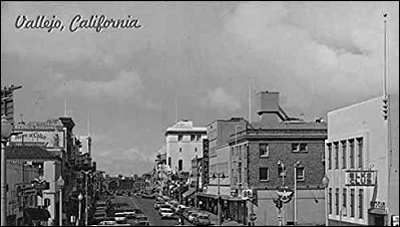 |
(Chapter 45) Once across the bridge, we were in the town of Vallejo (pronounced vuhˑLAYˑho), where we turned northwest on Sonoma Boulevard, also identified on maps as State Route 20. |
(Chapter 45) SR-20 ultimately turned due north and became State Route 12 for a while before it changed numbers yet again and became State Route 29 in the town of Napa. |
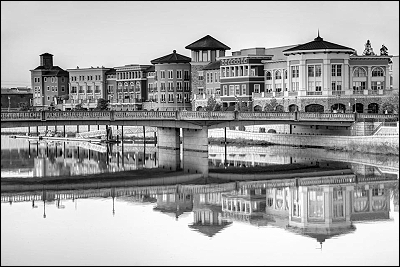 |
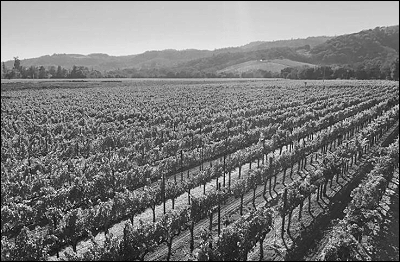 |
(Chapter 45) In the distance on both sides of the road we could see the low hills that made the Napa Valley a valley. |
(Chapter 45) In the gallery we saw gift baskets, travel-style posters featuring wine country scenes, and of course, wine—every variety of wine ever thought of, including some I'm sure cannot be made from the kinds of grapes grown in the area. |
 |
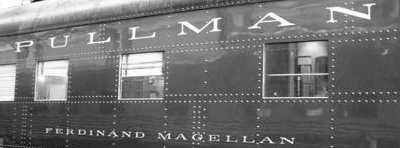 |
(Chapter 46) The dark green Pullman railroad car looked about the same as when we saw it three days ago . . . . |
(Chapter 46) The large man next to him stood with some difficulty and said, "Mister Atkins and Miss Blanchard, I presume? I am Franklin Roosevelt." |
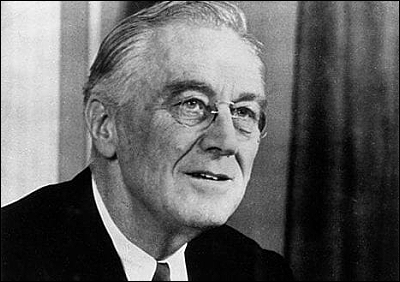 |
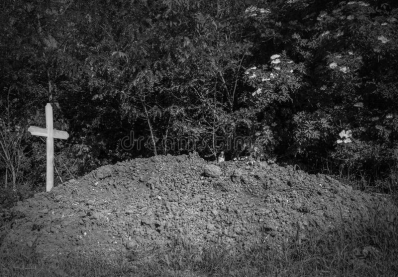 |
(Chapter 47) He was interred in an area called The Palms, which is about as far from the front of the cemetery as you can get and still be dead. His grave was marked by a pile of fresh earth and a white wooden cross imprinted with "K. Fuchs" and "17 March, 1939." That the grave was secluded probably would have pleased Herr Fuchs. He preferred anonymity. |
(Chapter 47) We ate our lunch with a whole lot of Pacific Ocean for a view. I could get used to looking at that view when I woke up every morning. Well, I can dream can't I? |
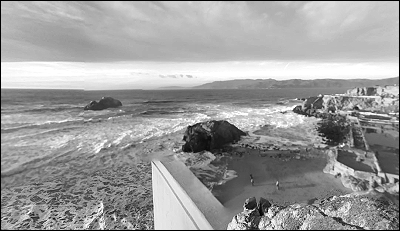 |
 |
(Chapter 47) "The two-story home at 608 48th looked even better in the sunshine than it had when we drove past it in the dark. Charlie was all eyes as we walked up two short sets of brick stairs next to a wrought iron railing that turned the corner and fronted a front porch large enough for a round wrought iron table and two chairs surrounded by terracotta pots containing healthy looking plants. |
(Chapter 48) I woke up, looked out our bedroom window at a fabulous view, and heard Jack Carpenter's voice in my mind saying, " You are in the big time, now. |
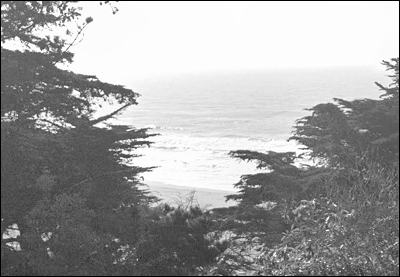 |
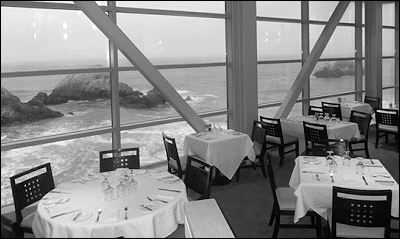 |
(Chapter 48) By noon, Don Chambers and I were in a lounge at the Cliff House having our photographs made in front of some huge windows with views of the surf and Seal Rocks. |
(Chapter 48) By five o'clock, Charlie and I were in a deluxe double bedroom aboard the Cascade Daylight on our way to Portland and points north. Sitting with my arm around her, Charlie and I watched the scenery stream by our window. |
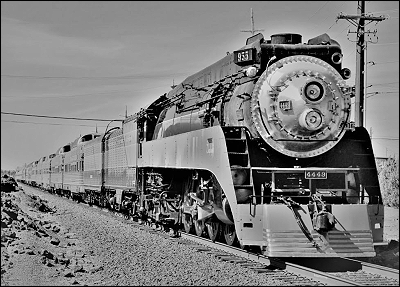 |
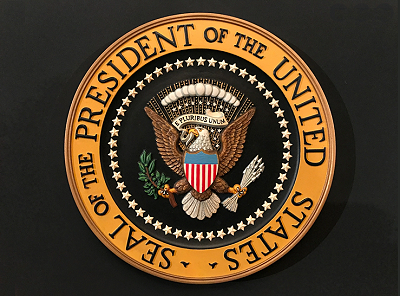 |
(Chapter 48)
CHARLIE AND PARK —
|